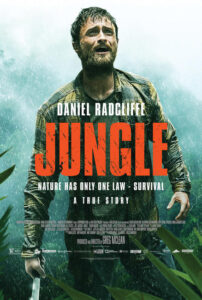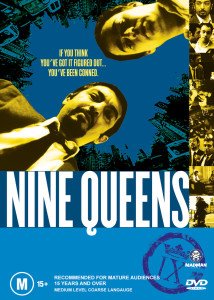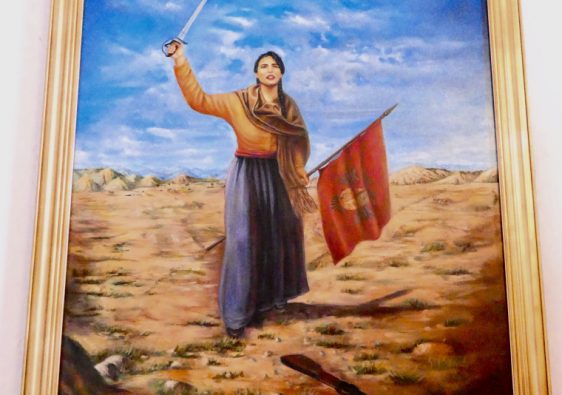Question: How many films set in South America can you name? A couple, a handful, quite a few? To score better at your next game of Trivial Pursuit, or rather to inspire you with some great watching inspiration, we’ve turned to fellow movie lovers and asked them this question: What are the best movies set in South America?
We’re happy to list here international films set on the continent, some famous Latin movies and also a few lesser-known South American directors. We have comedies, we have dramas, we have historical fiction and an essential road movie. So enjoy the best South American movies!
Relatos Salvajes (Damián Szifron, 2014)
Watched by Erin from Sol Salute.

Relatos Salvajes is not only one of the best Argentine movies, but it’s also one of my favorite movies, full stop. The title translates to Wild Tales, which is an adequate description for this collection of 6 short films. All six stories have the same underlying theme of extreme behavior. The characters in each scene spiral out of control as they act on the impulses we typically suppress and situations escalate quickly.
It’s an intense movie and I was on the edge of my seat the entire time. Despite it being two hours long the time flies by. What I love most is how relatable each plotline is. Whether it’s fighting over an unfair parking ticket or a bit of road rage, we’ve all been in the situations that take place in Relatos Salvajes. We’ve all wanted to react the way the characters do in the film, but social norms prohibit it, and it’s oddly justifying (and horrifying) to see how it all would play out if we did.
The House of the Spirits (Billie August, 1993)
Watched by Claudia from My Adventures Across The World.

The House of the Spirits is a 1993 movie with a superstar cast that includes Antonio Banderas, Winona Ryder, Jeremy Irons, Meryl Streep, Glenn Close and Vanessa Redgrave and which is based on a 1982 novel of the same name by Isabel Allende (1st cousin once removed of former Chilean president Salvador Allende, who was deposed by a military coup).
The movie tells the story of the Chilean military coup and subsequent dictatorship in Chile through the eyes and life of the Trueba family. The initial part is about the events that led Clara del Valle marry Esteban Trueba. Clara is a psychic in love with Esteban since her childhood, but he was meant to marry Rose, Clara’s sister, who dies in an accident Clara had predicted.
The second part of the movie sees Blanca, Clara and Esteban’s daughter, fall in love with Pedro Tercero, son of a local peasant – a love that is strongly opposed by Esteban.
The third part of the movie is all about the political unrest in Chile. Esteban, who is now a senator, is shocked when his conservative party doesn’t win the election. The subsequent military coup to re-establish the control of the conservatives leads to the arrest, detention and torture of Blanca and Pedro, who are both militants in the People’s Front. They eventually manage to both escape to Canada thanks to Esteban’s influence.
This is a great movie (and book) to get a better understanding about the complicated past of Chile. At times incredibly romantic, other times it can be violent to the point of being gruesome, but the more than 2 hours go by quite quickly.
To watch also:
One of the best movies about South America, My Best Enemy (2005) is a Chilean-Argentine co-production directed by Álex Bowen. It takes place during the Beagle conflict that opposed Chile and Argentina in 1978 over the possession of 3 small islands. A patrol from each country get stranded in the mountains in Patagonia and help each other survive.
This war is an important event in the history of the 2 countries, because it’s seen as the main reason for the support of Chile to the UK during the Falklands War four years later. A support that some older Argentinians still resent nowadays.
As the movie poster states, the film shows “the worst about war and the best in people”.
City of God (Fernando Meirelles & Kátia Lund, 2002)
Watched by Jenna from I Know The Pilot.

Cidade de Deus is a film that spans several decades from the 1960’s through to the 1980’s, telling the story of two young men growing up in the ‘City of God’, a favela (or slum) in Rio de Janeiro. The city is a character in itself, and the grim reality of it serves as a poignant backdrop to the struggles these boys face trying to survive their (often brutal) circumstances.
This action-packed, fast-paced film, adapted from the novel by Paulo Lins, tells the story of two boys and their journey through an unforgiving world; one named Rocket, who narrates the film and wants to escape the city, and the other named Li’l Dice, who aims to be the ultimate gangster and king of the ‘City of God’. Journeying through the decades we see how both boys evolve and grow within their environment, who they become and the choices they make. Though it has a heavy storyline, and some pretty shocking scenes, the storytelling is stunning – interspersed with lighter moments, fantastic acting and brilliant cinematography.
Although this film highlights a darker side of the usually colourful Rio, the authenticity of the location and the characters still has a beauty that transcends the gritty storyline. Offering a real look into the lives of Rio’s residents, this film is beautifully done and definitely one to watch. And despite all the darkness, it still inspires wanderlust and shines a light on the spirit of Brazil.
City of Men (Paulo Morelli, 2007)
Watched by David from Survey Fanatics.

Cidade dos Homens is a Brazilian film set in Rio de Janeiro. It is a spin off of a Brazilian television series of the same name which was a spin off of City of God. This movie also was co-produced by the director of City of God, Fernando Meirelles, and has some of the same actors.
City of Men tells the story of two 18 year old best friends. It’s set in favelas and shows the harder side of life in Brazil. The film starts with the best friends trying to find one of their fathers that they have never met while battling with family issues with a young wife and son. While this might be enough drama for many films, this is the favelas of Brazil so there is also gang warfare going on as young men battle for the top position.
I like this film as it offers a glimpse into a world I will never know. The characters are well developed and the drama gritty and real. I recommend it for anyone who wants to see a different side of the world especially if you are a fan of City of God.
The Secret in Their Eyes (Juan José Campanella, 2009)
Watched by John from Carpe Diem Eire.

As possibly the best movie to ever come out of Argentina, El secreto de sus ojos won the Academy Award for best foreign language film in 2009. A character driven thriller, it follows an investigator (Espósito) as he pursues a rapist and murderer in 1970’s Argentina. The investigation faces constant political obstacles, as the build up to the Dirty War of the mid 70’s rumbles in the background. The film spans a period of 25 years, and the case touches the lives of all who it comes in contact with. Looking for final closure while writing a novel in 1999, Espósito digs one last time into the case.
The central figure is played by Ricardo Darín, and he commands the role brilliantly. The acting in general is majestic, and the actors truly do the films title justice. The secrets really do lie in their eyes! Darin’s character in particular cuts a tortured path through life, with his unprofessed love for his superior providing his greatest regret.
It’s a slow paced thriller, and one where we cannot help but connect with the flawed characters at its heart. The excellent direction and cinematography provide the final stamp on what is an unmissable movie.
To watch also:
Fitzcarraldo (1982) is a West German film directed by renown director Werner Herzog. It tells the absurd story of Brian Sweeney Fitzgerald, an Irish rubber baron who is determined to transport a steamship piece by piece up a mountain in Peru. If for nothing else, for the scenery it’s well worth watching this South American movie.
The story line is based on true events. In the late 19th century, entrepreneur Carlos Fitzcarrald forced his indigenous workforce to dismantle and transport a ship over a mountain in order to bring rubber out of the Peruvian Amazon basin. Today, the remains of the steamship sunken in the Madre de Dios river can be seen near the Amazonian town of Puerto Maldonado.
The film’s production was hell. Three people got injured and the main actor got sick halfway through filming. He had to be replaced by Klaus Kinski, Herzog’s pet peeve. The two got along so badly that an extra even offered the director to kill Kinski.
Jungle (Greg McLean, 2017)
Watched by Megan from Red Around the World.

Yossi Ghinsberg is an Israeli backpacker exploring South America when he travels to Bolivia and decides to explore the heart of the Amazon. He meets Markus Stamm, a Swiss school teacher, and Kevin Gale, a US American photographer, in La Paz where the trip comes into fruition. Karl Ruprechter, an Austrian man, asks Yossi if they want to go see an Indian tribe in the jungle that he is friends with and after some convincing, Markus and Kevin reluctantly agree.
After several days trekking through the jungle, they meet the tribe and it is apparent that Karl does know them, but when they leave the next day, Markus is having trouble walking because of bloody sores on his feet. Deciding what to do next, they make a raft to float down the river so they can stay together and make the journey easier, but soon enough that plan doesn’t work. Karl and Markus decide to trek back to La Paz while Yossi and Kevin continue on the raft. Soon after, the raft is destroyed in rapids and the two are separated, left to fend for themselves in the ruthless jungle.
“Jungle” is based off of a book (and true story) which is one I re-read on a regular basis, so I loved the movie starring Daniel Radcliffe as Yossi. It was so cool getting to see a book I enjoyed so much made into a movie and being able to experience the story in a new way.
Lighthouse of the Orcas (Gerardo Olivares, 2016)
Watched by Steffi from Beach Bum Adventure.

I watched Lighthouse of the Orcas last month for the first time and it has now become a film that I will watch over and over again.
It is based on the true story of a Spanish mother who takes her autistic son to Argentina with the aim of seeing killer whales. Seeing orcas on TV was the only time that she felt her son had made an emotional connection and therefore she seeks out the park ranger who has a special bond with a particular family of orcas, hoping that he will help her son to connect to the world around him.
The landscape views of Argentina are spectacular and the shots of the orcas and the bond that they have with the park ranger is incredible, heart-warming and so improbable you feel like it can’t be a true story. But it is.
I strongly recommend this for anyone who loves the ocean, loves Spanish-speaking films and slow, beautifully shot movies based on real life. It will definitely be a movie that makes you want to travel, makes you wonder at marine animals and makes you feel there is magic in the world.
No (Pablo Larraín, 2012)
Watched by Anna from Green Mochila.

I found this Chilean film fascinating, because it’s based on true events, and among the most important in modern Chile’s history: the dictatorship of Augusto Pinochet. For those of you who haven’t met him yet, he was a military dictator in Chile for no less than 17 years. Although his regime ended in 1990, the country still hasn’t been able to properly come to terms with this dark period.
While we travelled through Chile, we often met with the inability of Chileans to tell us objectively what happened during that period, so I was really intrigued to watch this film.
“No” tells the story of the national referendum that took place in 1988, motivated by international pressure. Chileans were asked to vote whether Pinochet should be president for 8 more years (“yes”), or if there should be a democratic election (“no”). Gael García Bernal, who we know from The Motorcycles Diary and Bad Education, plays a marketing specialist who is asked to create a TV campaign for the “no” side. His style is somewhat provocative, and sheds a light on the dark reality of the event.
This film is an exciting watch for those who are into South American history, cute Chilean accents and retro 80’s style. Definitely one of the best South American movies!
To watch also:
One of the best movies about South America, Central Station (1998) tells the journey through Brazil of a former school teacher and a young boy whose mother has just died, as they search for the father he never knew.
In this sweet story, Brazilian director Walter Salles, who has signed several good Latin movies, showcases the good that lies behind the appearances. He takes us on a road trip to the north of Brazil, to an authentic part of the country that is off the tourist radar.
Qué tan lejos (Tania Hermida, 2006)
Watched by Caroline & Paolo from Searching El Dorado.

Esperanza (Hope) and Tristeza (Sadness) meet at the bus terminal in Quito. They are both traveling to Cuenca, but for very different reasons. While Esperanza is a Spanish tourist visiting the country, Tristeza needs to get there in time to stop the wedding of her summer love. An Indigenous-led strike force them to continue the trip walking and hitchhiking. Soon they are joined by Jesus, who is bringing the ashes of his grandmother to her hometown for the funeral.
Qué tan lejos (translated into English as ‘How Much Further‘) starts in Quito and ends in Cuenca, passing through some of the most famous and touristic areas of Ecuador. But these places are absent from the movie, where they miss both the Cotopaxi because “it was raining”, and the Chimborazo because “it never shows himself to foreigners”. The landscapes that we see, from the Andes to the Ocean, while far from the images you get on postcards, are extremely beautiful.
The movie shows another Ecuador, an Ecuador made of people, all the secondary characters that populates the protagonists’ journey. It gives us a description of the country, made with irony and humor, that successfully avoids stereotypes.
The Motorcycle Diaries (Walter Salles, 2004)
Watched by Babs from Mums On Flipflops.

Diarios de Motocicleta is a 2004 movie that tells the story of a young Che Guevara and the experiences that will lead to him turning into the famous revolutionary who has defined Cuba as a country and still continues to do so today.
The film takes you back to 1952, where two Argentinians friends, Ernesto Guevara –who studies medicine– and Alberto Granado –a biochemist– decide to go on a cross-country road trip to celebrate Alberto’s birthday. The end goal is a leper colony in Peru where they will work for a while. Along the way, the poverty and social injustice they encounter have such a big impact on Ernesto that they will lay the groundwork for his later radicalized ideals.
Ernesto and Alberto make their journey on an old Norton 500 motorcycle –which they call La Poderosa– and travel 8 months from the pampas in Argentina through the high summits of the Andes and the Atacama desert to finally reach the Peruvian Amazon basin.
The motorcycle diaries conveys an important part of South-American history but, on top of that, it is beautifully filmed and makes you want to take a plane to anywhere in South America and travel around. In 2009, my wife and I did just that and travelled all the way from Brazil down into Patagonia and back up to Ecuador in 6 months. Although we did choose a yellow Volkswagen camper to do so and not a motorcycle.
Nine Queens (Fabián Bielinsky, 2000)
Watched by Ignacio from Tango & Rakija.
This film is probably a MUST see from Argentinian cinema. I would suggest it to anyone who is curious about Argentina and Argentinian people doing Argentinian things.
The film shows the city of Buenos Aires, hidden places and real, non-touristic ones so it is a great source of inspiration for travelling as well.
Speaking about mentality as such (that could be understood as one of the main ideas of this film), or more specifically, about Argentinian mentality, my personal belief is that, if you follow the main characters and their behaviors, you will see the essence of our Latin (and/or Argentinian) heritage and mentality.
You will be surprised by the creativity and street-style wisdom of the characters showing their master skills through the most brilliant scams all along the film.
The funny thing is that with very little of a classic comedy exaggeration, Argentinians are depicted quite realistically. It focuses on their (our) creativity and imagination when it comes to finding workarounds, simplifying complicated things and complicating the simple ones.
Another interesting fact – almost all of the scams shown in the film are real and happening right now all around Argentina. At least one of the scams happened to any average Argentinian (here present one of them).
Hope that you enjoy the film and that it will motivate you to make a quick (or long) trip to Buenos Aires. Do not be scared by scams – apart from them, Argentinians are really nice.
Even The Rain (Icíar Bollaín, 2010)
Watched by Deb from The Visa Project.

The year is 2000, and a water war has broken out in Cochabamba, the third-biggest city of Bolivia, over the government’s decision to sell the water rights to a private MNC, that also makes conserving rain-water illegal. A Mexican film-maker and his Spanish producer arrive around the same time to shoot a movie about the expedition of Christopher Columbus and the resulting indigenous rebellion by Hatuey. The movie is set to dispel the notions about Columbus being a hero, and rather being the guy who perpetrated innumerable atrocities on the indigenous people.
Bolivia is chosen as the shooting destination owing to its cheap labor and extras who would also help in set preparation. The local man who plays the role of Hatuey, also leads the real demonstrations over the water protests. As the movie progresses, its characters and their roles in the real protests get amalgamated.
También la lluvia is a wonderful movie for anyone who wants to get his/her head around Latin America. However, what I like the most about the movie is how it exposes the many flaws of human character, moral oscillations, and how fragile we all are.
Maria Full of Grace (Joshua Marston, 2004)
Read by Emma from Our Spanish Life.

Maria Full of Grace is a film set in Colombia but filmed between Colombia and New York City. It tells the story of Maria, a teenage girl who helps to support her family with her job at a flower plantation in rural Colombia. After finding out she is pregnant to her teenage boyfriend who she does not love nor want to marry, Maria travels to Bogotá to find work.
Here she is convinced to work as a drug mule, by ingesting pellets of cocaine before boarding a flight to New York City. The film helped shed a light on this practice, which is unfortunately common among the drug cartels. Young women, who are threatened by the drug lords, often end up in jail or even die from ingesting the stuff. What follows is a fascinating and harrowing tale of crime, death and survival.
I like the film because it shows the massive impact the United States’ insatiable demand for cocaine has on the lives of people in Colombia. With so many films and shows glorifying the violence resulting from the War on Drugs, Maria Full of Grace tells the other side of the story.
★
And you, what’s YOUR favourite movie set in South America? Any recommendation that’s not on the list?
Contact us so we can add it!
Like it? Pin it!

Don’t miss anything from our cultural travel blog!





Whereas last week I hadn’t read many, I fare much better with these having seen about half. I do want to see Maria Full of Grace though, and have planned to watch it for years. One of these days.
Oh wow, you’ve seen half of those? You’re quite the movie aficionado, John!
Wow! I have only ever heard of a few movies on this list. Each of them sound great! When I can find where to stream these, there will be a South American themed movie marathon sometime soon. 🙂
While doing this post, we realised there were more movies in South America than we first thought. Hope you manage to find some of those, Lannie!
Fantastic list! It looks like our quarantine list of movies is replenishing! 🙂 Cheers!
Those lists fill up faster than they empty, don’t they? If we ever expand our blog, we’d love to create a similar list about all Latin American cinema, including Mexico and the rest of Central America. That should be interesting!
Ah! Thank you for this great list! I am currently watching El faro de los orcas and the landscapes are indeed incredible ! I am so happy I have now more movies to add to my list, great one!
We hadn’t heard about that film before starting this post. It looks pretty good, doesn’t it? Thanks for your nice words, Alexandra!
Brilliant List! It has some of my all time favourite movies, and I’ll make sure I watch the rest. Thanks for sharing
There are some crazy good movies about South America, right? Doing this collaboration has been a great source of inspiration for us too. Thanks for your visit!
We are a movie family…so am surprised I’ve never seen any on this list. Need to change that…will add a few more options to our movie night!
I’m ashamed to say that I haven’t seen any of them. Does Rio count? haha